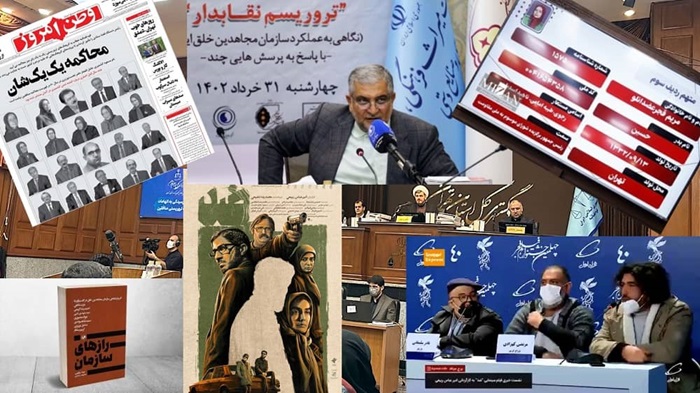

Traditionally, Iranian authorities have referred to the MEK as “hypocrites” in official contexts. However, a distinct change is emerging in public conversations, visible across various platforms such as social media, news commentary, conferences, media reports, and domestically-targeted films. These platforms are increasingly using the term “Mujahedin-e Khalq” with a frequency that is both noteworthy and unprecedented.
Despite the regime’s unaltered view of the MEK as a primary adversary over the past 44 years, this change is becoming more apparent within Iranian society. The public’s growing interest in the MEK, contrary to the regime’s longstanding propaganda, is a response to decades of political oppression, social discrimination, economic corruption, and the brutal suppression of various uprisings. This shift necessitates a change in the regime’s media strategy, as evidenced by the increasing search for information about the MEK, both online and offline.
The regime’s history of severe suppression and vilification of the MEK is well-documented. In a noteworthy move, the Iranian Judiciary conducts formal court proceedings against the MEK’s leaders, with weekly trials in Tehran every Tuesday. These trials feature state officials discussing the MEK’s alleged crimes and broadcasting fabricated documentaries and propaganda through all state-controlled media outlets.
Former MOIS Interrogator Warns Against #MEK Influence in #Iran, Calls for Internet Restrictionshttps://t.co/FKQS8AGR8F
— NCRI-FAC (@iran_policy) January 10, 2024
A simple Persian language search reveals that the term “Mujahedin-e Khalq” is as prevalent as “Monafeqin” (Arabic for hypocrites) in online results from state media. The regime’s hostile stance extends beyond its borders, with officials demanding the expulsion or restriction of MEK activities in foreign delegations.
The Iranian regime has long engaged in manipulating content related to the National Council of Resistance of Iran (NCRI) and the MEK on social networks, websites, and even Wikipedia pages through its cyber army. The Times, on January 7, exposed the regime’s tactics of distorting information on Wikipedia to malign the MEK. In contrast, Persian Wikipedia’s coverage of Iranian affairs often differs significantly from its English counterpart, as revealed by Open Democracy in 2019.
Domestically, these activities are intensifying. On January 13, a session in Tehran discussed the movie “Zed” (Persian for antagonist), produced by intelligence agencies to portray the MEK in a negative light. The film, set in the 1980s, is filled with historical distortions, as acknowledged by experts at the session. Mohammad Rahmani, a cinema history researcher, criticized the film for inaccurately depicting MEK members and events.
The MEK’s Growing Influence Sparks Iran Regime’s Fear and Desperationhttps://t.co/2cUTDRbhXp
— NCRI-FAC (@iran_policy) May 23, 2023
Furthermore, the website Raheno recently criticized the 28th telethon by Simay-e Azadi, a satellite network linked to the Iranian Resistance, revealing the regime’s frustration with the Resistance’s financial independence and societal support.
An intriguing aspect of the regime’s propaganda is the persistent effort to discredit the MEK, overshadowing more critical issues. Despite changes in international politics

MEK Iran (follow us on Twitter and Facebook), Maryam Rajavi’s on her site, Twitter & Facebook, NCRI (Twitter & Facebook), and People’s Mojahedin Organization of Iran – MEK IRAN – YouTu







